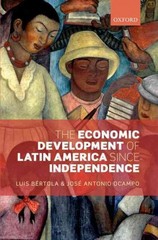Question
Deflation in the Great DepressionAfter the collapse of the stock market in 1929, the US economyplunged into an economic depression. As the first twocolumns of
Deflation in the Great DepressionAfter the collapse of the stock market in 1929, the US economyplunged into an economic depression. As the first twocolumns of Table 1 show, the unemployment rate soaredfrom 3.2% in 1929 to 24.9% in 1933, and output growthwas strongly negative for four years in a row. From 1933 on,the economy recovered slowly, but by 1940 the unemploymentrate was still high at 14.6%.The Great Depression has many elements in commonwith the Great Recession. A large increase in asset pricesbefore the crash: housing prices in the recent crisis, stockmarket prices in the Great Depression, and the amplificationof the shock through the banking system. There arealso important differences. As you can see by comparing theoutput growth and unemployment numbers in Table 1 to thenumbers for the Great Recession in Chapter 1, the decrease inoutput and the increase in unemployment were much largerthen than in the Great Recession. In this box, we focus onjust one aspect of the Great Depression: the evolution of thenominal and real interest rates and the dangers of deflation.As you can see in the third column of the table, in the faceof rising unemployment, the Fed decreased the nominal rate,measured in the table by the one-year T-bill rate, although itdid this slowly and did not quite go all the way to zero. Thenominal rate decreased from 5.3% in 1929 to 2.6% in 1933.At the same time, as shown in the fourth column, the declinein output and the increase in unemployment led to a sharpdecrease in inflation. Inflation, equal to zero in 1929, turnednegative in 1930, reaching -9.2% in 1931, and -10.8%in 1932. If we make the assumption that expected deflationwas equal to actual deflation in each year, we can constructa series for the real rate. This is done in the last column ofthe table and gives a hint for why output continued to declineuntil 1933. The real rate reached 12.3% in 1931, 14.8% in1932, and still a high 7.8% in 1933! It is no great surprisethat, at those interest rates, both consumption and investmentdemand remained very low, and the depression worsened.In 1933, the economy seemed to be in a deflation trap,with low activity leading to more deflation, a higher real interestrate, lower spending, and so on. Starting in 1934, however,deflation gave way to inflation, leading to a large decrease inthe real interest rate, and the economy began to recover. Why,despite a high unemployment rate, the US economy was ableto avoid further deflation remains a hotly debated issue. Somepoint to a change in monetary policy, a large increase in themoney supply, leading to a change in inflation expectations.Others point to the policies of the New Deal, in particularthe establishment of a minimum wage, thus limiting furtherwage decreases. Whatever the reason, this was the end of thedeflation trap and the beginning of a long recovery.For more on the Great Depression:Lester Chandler, America's Greatest Depression (1970,HarperCollins), gives the basic facts. So does the book by John A.Garraty, The Great Depression (1986, Anchor).Did Monetary Forces Cause the Great Depression? (1976,W. W. Norton), by Peter Temin, looks more specifically at themacroeconomic issues. So do the articles from a symposium onthe Great Depression in the Journal of Economic Perspectives,Spring 1993.For a look at the Great Depression in countries other thanthe United States, read Peter Temin's Lessons from the GreatDepression (1989, MIT Press). Table 1Unemployment, Output Growth, Nominal Interest Rate, Inflation, and Real YearUnemployment Rate (%)Output Growth Rate (%)Inflation Rate (%)One-Year Nominal Interest Rate (%), rOne-Year Real Interest Rate (%), r19293.2- 9.85.30.05.319308.7-7.64.4-2.56.9193115.914.73.1-9.212.3193223.6-1.84.0-10.814.8193324.99.12.6-5.27.8 1. Consider the data in the Focus Box, "Deflation in the GreatDepression."a. Do you believe that output had returned to its potentiallevel in 1933?b. Which years suggest a deflation spiral as described inFigure 9-3?c. Make the argument that if the expected level of inflationhad remained anchored at the actual value of inflationin 1929, the Great Depression would have been lesssevere.d. Make the argument that a substantial fiscal stimulus in1930 would have made the Great Depression less severe.2. Consider the data in the Focus Box, "Deflation in the GreatDepression."a. Calculate real interest rates in each year, assuming that the expected level of inflation is last year'srate of inflation. The rate of inflation in 1928 was -1.7%.Do the changes in real interest rates explain the data onreal output growth and unemployment better than whenyou make the assumption the expected rate of inflation isthe current year's rate of inflation?

Step by Step Solution
There are 3 Steps involved in it
Step: 1

Get Instant Access to Expert-Tailored Solutions
See step-by-step solutions with expert insights and AI powered tools for academic success
Step: 2

Step: 3

Ace Your Homework with AI
Get the answers you need in no time with our AI-driven, step-by-step assistance
Get Started


